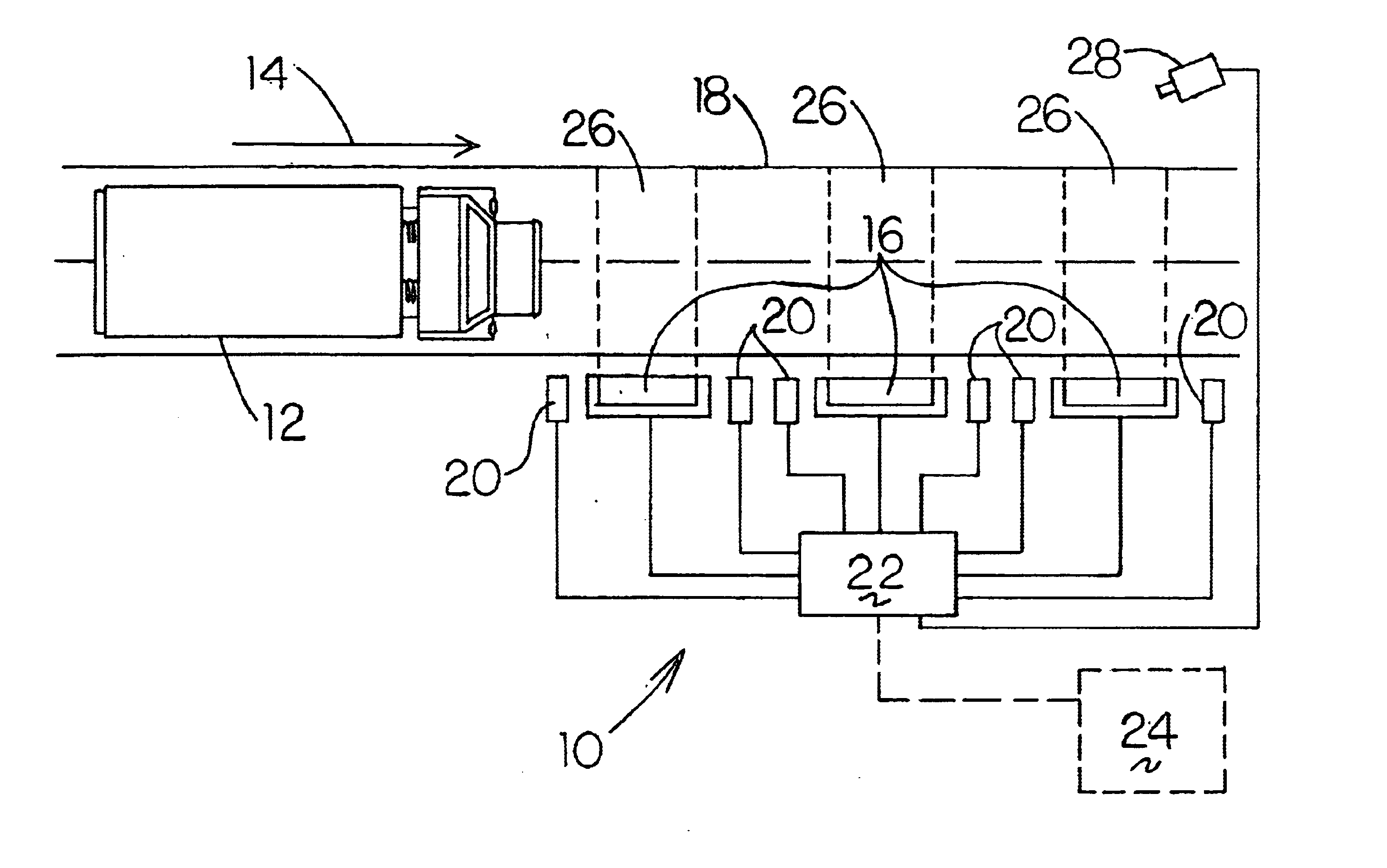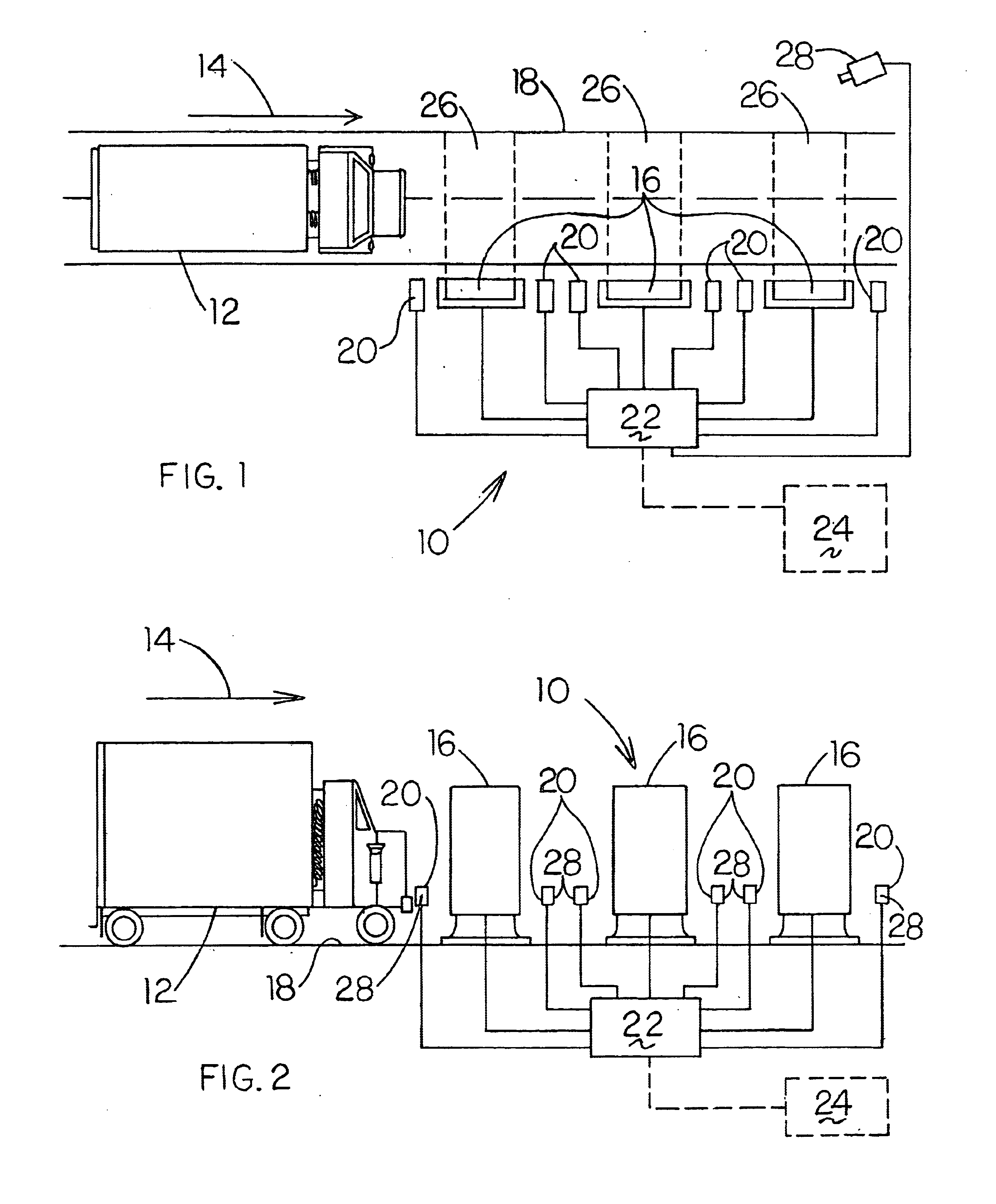Method and apparatus for a radiation monitoring system
a radiation monitoring system and method technology, applied in the field of detection of ionizing radiation, can solve the problems of large sensitivity of detecting moving objects emitting ionizing radiation, large cost of decontamination of yards, and high sensitivity of detecting moving objects
- Summary
- Abstract
- Description
- Claims
- Application Information
AI Technical Summary
Benefits of technology
Problems solved by technology
Method used
Image
Examples
Embodiment Construction
FIGS. 1-7 illustrate the new and improved radiation monitoring system 10 of the present invention. FIGS. 1 and 2 depict the system 10 of the invention in use. FIGS. 3-7 show diagrammatic graphical examples of readings taken from the system and the unique manner in which they are summed and averaged in order to detect radiation emitting objects moving at high speeds in light of background levels of radiation. Referring to FIGS. 1 and 2, the radiation monitoring system 10 for detecting moving radioactive sources is shown. It will be appreciated that the moving source may be a vehicle 12 such as a car, truck or train, or an object such as scrap moving along a conveyor belt, baggage or luggage moving through an airport luggage distribution system, or parcels and packages being routed at a mail distribution site even though the drawings and description following are specific to a vehicle.
A vehicle 12 is shown traveling in the direction of the arrow 14. The vehicle is scanned for ionizing...
PUM
 Login to View More
Login to View More Abstract
Description
Claims
Application Information
 Login to View More
Login to View More - R&D
- Intellectual Property
- Life Sciences
- Materials
- Tech Scout
- Unparalleled Data Quality
- Higher Quality Content
- 60% Fewer Hallucinations
Browse by: Latest US Patents, China's latest patents, Technical Efficacy Thesaurus, Application Domain, Technology Topic, Popular Technical Reports.
© 2025 PatSnap. All rights reserved.Legal|Privacy policy|Modern Slavery Act Transparency Statement|Sitemap|About US| Contact US: help@patsnap.com



